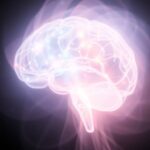Deepening My Understanding
A couple of weeks ago, I finished the second course of Kriya Yoga. It has been very impactful on both my practice and understanding of yoga philosophy. Many things started falling into place in terms of my understanding of the world, my purpose, the mechanism of meditation, etc. From the results I’ve seen in such a short period of time, I became sure that I have finally found my path that I will be able to stick with all the way to the end. I am very excited and happy.
In this course, we covered many deep topics, including the introduction of Vedanta, Ashtanga Yoga and its first two limbs of yama and niyama, the mechanism of magnetism, and affirmation. There is a perfect blend of practical and theoretical knowledge, and it all goes hand in hand. Everything makes perfect sense and provides the explanation for why a yogi should be doing this or that. It’s all internally consistent, and for me, this is a telltale sign of a legitimate system of knowledge. Well, no wonder in this case since yoga is thousands of years old, and it must be based on something real and profound to endure so long.
Exploring the Different Paths of Yoga
There has also been an overview of the different types of yoga such as Karma Yoga (yoga through action), Jnana Yoga (yoga of wisdom), and Bhakti Yoga (yoga through devotion). The different paths of yoga are there because they are conducive to different types of people. I personally found myself gravitating towards the path of wisdom because I’ve always been seeking it, and that’s how I process my insights. It’s been a central theme in my life because I’ve always been seeking out more insights, more understanding, more meaning.
Raja Yoga is the royal yoga that is kind of like a king of all yogas from my understanding and combines the aspects of other yogas. I believe that’s where Ashtanga Yoga falls under, and also Hatha Yoga is part of it as the physical aspect of Raja Yoga. The focus of Kriya Yoga itself is essentially inner work. Kriya means divine action, so that action is done within, as opposed to Karma Yoga, for example, where the path is walked through external action.
I spent the two weeks after the course reviewing my notes and structuring them into a mind map that unites all my knowledge about yoga. It’s already a robust document, and I intend to keep developing it as I go through the next studies. It helped me organize a good amount of this initial information about the path of yoga, broken into the branches of Vedanta as the philosophy that describes the true goal of yoga practice and describes the Ultimate Reality; Sankhya as the examination of man’s present state and his need to seek a higher one; and yoga itself as the science by which the Ultimate Reality may be realized.
The Ultimate Goal: Sat Chit Ananda
The way yoga brings one closer to the final realization is through the neutralization of ego. The ultimate goal of the path of yoga is the achievement of Sat Chit Ananda—the truth-consciousness-bliss. It is known as the soul’s true nature and its final destiny, its birthright. This goal makes perfect sense to me because, to my analytical mind, I always try to see what the end result should be. And this truly does seem to be an end result and one worth striving towards. After all, when you reduce all your possible wants to the root cause that is driving us, it is the fact that we do want bliss and don’t want suffering. Well, what could be better than eternal bliss?
I’ve had a glimpse of that state of bliss from my only experience with 5-MeO-DMT when I tried it in the jungles of Peru with Shipibo shamans. Other participants had very diverse experiences, but mine was pure bliss. I got dissolved in the endless vibrating light that felt so perfect and infinite. After I came back, I sat with tears streaming down my face as I experienced the most intense bouts of compassion towards all. That experience is known as God’s orgasm, and I have to say that it is pretty apt. I believe that the path of yoga is leading towards that direction.
The Cosmology of Yoga
There were also many explanations about the creation of the universe as solidification of God’s vibrations that turned into thoughts, then into the causal world (a universe of pure ideas), then into the astral world (a universe of lights, shapes, and colors—all in the form of pure energy, as in a dream), and then into the physical world. This way, the world is literally a manifestation of God.
I liked how evil and good are defined in this philosophy. For manifestation to take place at all, God essentially had to splinter itself into pairs of opposites. That’s the only way anything can exist because otherwise there is only God and nothing else. Evil is defined as the movement of consciousness and energy which obscures the essential reality of things as the Infinite. This makes perfect sense because even in mainstream culture, evil is usually considered to be the consequence of ignorance. That is exactly what is highlighted in the yoga philosophy. Good is then that which helps to clarify the infinite nature of God reality, which of course includes absolutely everything.
The gradations of apparent divine unity and delusive disunity, of the sense of union with God and of separateness from Him, are called in Hinduism the three gunas or qualities. Sattva is elevating or spiritualizing. Tamas is darkening, inertial, or stultifying. Rajas is activating or energizing. These qualities are present in everything in various proportions: worlds, dimensions, planets, people. Of the three levels of creation, the physical universe is a manifestation primarily of tamo guna, the quality of inertia.
The Soul’s Journey and Divine Experimentation
From the way I understood it, through the incarnations the soul imbues what it incarnates as with its divine joy (since the soul is what comes from God). The folly of this game is that in these incarnations the soul seeks itself (or its source, God) in outward reflections and projects onto mere things. When the physical body dies, the astral body lives on, and if the soul still had desires when the body died, they still live on in the astral body. Those desires in turn propel the soul into physical incarnations again. In this way, the mechanism of yoga explains why extinguishing the desires of ego is the pathway to God.
In a sense, it seems that this is the inevitable end of the search of the separate soul that hopes to find something better than God. By extension, this means that this search is initiated by God. It’s like He sent all these particles of Himself as some kind of experiment to see if any of them can supersede Him or become Him or find something better than Him. It doesn’t seem like that is possible, and yet Hindu scriptures state that the cosmos is eventually dissolved by Him back into Himself, repeatedly. Not sure as to why that happens, but my understanding is that otherwise nothing would exist—as in the homogeneity of oneness, nothing would be distinguishable by anybody.
Refining My Yoga Practice
The purpose of the yogic practices is to remove the clutter from our consciousness and clear from our energy any distractions that keep us bound to a lower reality. That sounds just perfect to me, as the search for truth of the nature of reality has been my lifelong quest. Another major focus in the yogic practices is management of one’s energy. I have become very aware of my energy flows. I’ve learned to become very careful with it, and my current focus is to learn to preserve it for elevation up the spine for spiritualization and avoid any other unnecessary expenditure of it, including frivolous pleasure. For nothing compares with the joy of connection with God, so no compromises should be made by a determined yogi. I still struggle with that, but it has been getting easier and easier to remain on a stable orbit lately.
The nature and purpose of meditation have been clarified further as well. It doesn’t cease to amaze me how that understanding has been unfolding and changing throughout the years. You start doing something and only years later realize what it actually is. To me, that is a testament of us being led by the divine throughout all our experiences, for how could the little me ever figure out any of this? Meditation is the practice of directing the perception of truth without the sensory intermediaries. That perception is achieved not by manifesting what is real and true but by attuning oneself with it.
The yama and niyama branches of Ashtanga Yoga are the moral precepts that are designed to help a yogi stay conscious off the meditation mat. They all are fairly common sense: non-aggression, non-lying, non-stealing, non-sensuality, non-greed for yamas; cleanliness, contentment, austerity, self-study, devotion to the supreme lord for niyamas. These are heavily unpacked and on their own can be extensively studied before their spiritual importance can be properly understood. I took them not as some arbitrary precepts but as absolute necessities to practice if I want to make stable progress on the path instead of spinning my wheels in place or making a step forward and two back.
Much, much more information I can go over here that includes both the practical techniques and the pertinent ontology, but I’d have to turn this into a book. I will just mention the main elements of the current meditative practice:
- Relaxation and stretching
- Energization exercises
- Pranayama
- Prayer
- Affirmations
- Chanting
- Kriya meditation technique
These days, I talk to God a lot and invoke the gurus and masters of the past. I resonate with Paramahansa Yogananda the most, as his personality really stood out to me in the Autobiography of a Yogi, as well as the photos of him showcasing his infinitely wise eyes and benevolent facial features. All of these relations are supposed to be the conduit to God, and I feel them working just right at this point.
On some of my morning practices, I sometimes mix things up a bit as I’ve been enjoying the choiceless awareness meditation, and I like to practice the pranayama techniques I learned at Kripalu a couple of years ago. On the weekends I do some vinyasa flows as well as those are always fun and pleasant for the body. The practice of all of these has been becoming more and more intuitive, which makes it effortless as well. Makes me one happy aspiring yogi.
Namaste.



